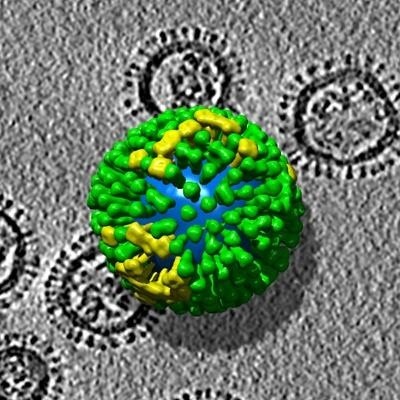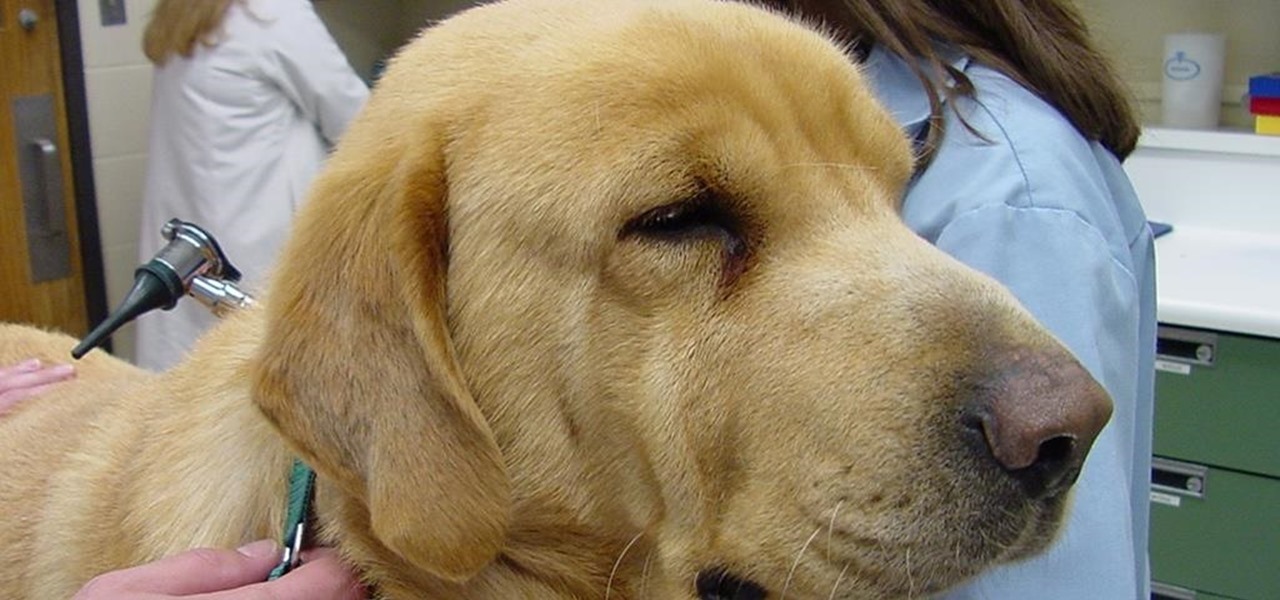You know the signs—sneezing, fever, nagging cough, no energy, no appetite. It's the flu, but this time, it's your dog who's down and out. Yes, dogs get the flu, too. However, a team from the University of Rochester Medical Center and their collaborators have developed a new vaccine that may make the doggy flu a thing of the past.
Canine flu infections primarily happen where dogs cluster in close quarters, like kennels and shelters. That's because the virus spreads via contagious respiratory secretions spewed into the air by coughing, barking, and sneezing.
The canine flu is a relatively new disease in dogs. An outbreak later attributed to the canine H3N8 influenza strain occurred in racing greyhounds in Florida in January 2004 and has infected dogs in 40 states since then. The first US outbreak of H3N2 canine influenza happened in Chicago in 2015 and spread throughout the midwest.
There are two H3N8 vaccines available for use in dogs, but they don't provide full protection and are marketed as aids to control the disease. In 2015, the first canine H3N2 vaccine came on the market.
The new vaccine is a nasal vaccine, as reported in the study published in the Journal of Virology, sprayed up the nose of the dog to create an immune response right where the flu virus usually invades their body. And a big advantage of the new vaccine is that it "only requires a single administration, contrary to the current vaccine (flu shot) that requires two doses separated in 3-4 weeks interval," study researcher Luis Martinez-Sobrido told Invisiverse.
New & Improved Vaccine
Canine influenza H3N8 was first seen in horses about 40 years ago, before it is believed to have mutated to become infectious to dogs. On the other hand, scientists believe the canine influenza H3N2 originally jumped directly from birds to dogs—possibly from birds infected in live bird markets.

The new vaccine was made to contain live, attenuated H3N8 viruses—flu viruses that are weakened so they don't cause the flu, but still insight the body to produce protection against it.
The dog flu vaccines currently available contain inactivated or killed H3N8 or H3N2 flu viruses, but these types of influenza vaccines only provide limited short-term protection. Because two doses are needed and the shot doesn't work all that well, the vaccines are only given to dogs in high risk situations—where they are very likely to come in contact with many other dogs often, like in a boarding kennel or doggie day care.
The body—ours or a dog's—produces only antibodies to killed vaccines, but live, attenuated vaccines activate both cells of the immune system and antibody production. That's why attenuated/weakened viral vaccines provide better immune responses and longer lasting protection than vaccines made from killed viruses.
And the study findings bore that out. The live, attenuated vaccine was safe and produced better immune protection against the H3N8 canine influenza virus in mice and in dog tracheal cells than the present commercially-available inactivated flu vaccine. The H3N8 vaccine provided some protection against H3N2.
"But, we are currently developing a live-attenuated vaccine for the treatment of the new H3N2 canine influenza virus using a similar approach to the one that is currently used for the human influenza vaccine," Martinez-Sobrido told Invisiverse.
Another next step will be to test this new nasal live, attenuated H3N8 canine flu vaccine in clinical trials with dogs.

As to how often dogs will need vaccination with the nasal vaccine, Martinez-Sobrido said that depends on whether the virus changes from year to year. Right now, unlike humans, dogs are fortunate that only the two strains of flu have been found to infect them. The study team plans to monitor for viruses circulating in dogs to determine if the vaccine's immunity is still protecting them.
In the Meantime, Here Are Some Flu Signs to Watch for in Your Dog
The primary sign of flu in your dog will be a moist or dry cough that will last for up to three weeks. Only your veterinarian will be able to tell if your dog has the flu, kennel cough (caused by a bacteria called Bordetella), or some other type of respiratory infection.
Just like for human viral infections, your dog's doctor may prescribe nonsteroidal anti-inflammatory medications to reduce fever, and fluids to prevent dehydration caused by the fever. Your dog should recover in 2-3 weeks, but be sure to watch for signs of a secondary bacterial infection. If your dog's fever gets to 104°F or the dog has a discharge from the nose that is not clear, but thick and colored, that may be a sign they now have a bacterial infection, on top of the flu—and the vet will prescribe antibiotics for that.
If your dog does get the flu, you will need to keep him or her away from other dogs for about three weeks to avoid infecting others with this highly contagious virus.
Not only can the disease be passed easily from dog to dog, but objects contaminated with the virus particles, like food and water bowls, collars, and leashes, can provide a source of infection where the virus can live for up to 48 hours. People who handle the dogs don't get infected but can pass on virus to other dogs, too. The virus can survive on their clothing for 24 hours, and on their hands for 12 hours.
Beyond making it easier to prevent outbreaks in areas where dogs are housed, the new nasal vaccine, "may be possible to eradicate both H3N8 and H3N2 canine influenza viruses from the dog population through infection control as well as vaccination approaches," wrote the study authors.
And don't worry, cats have passed their flu to humans, but the dog flu has not infected humans. Not yet.
Just updated your iPhone? You'll find new emoji, enhanced security, podcast transcripts, Apple Cash virtual numbers, and other useful features. There are even new additions hidden within Safari. Find out what's new and changed on your iPhone with the iOS 17.4 update.


























Be the First to Comment
Share Your Thoughts